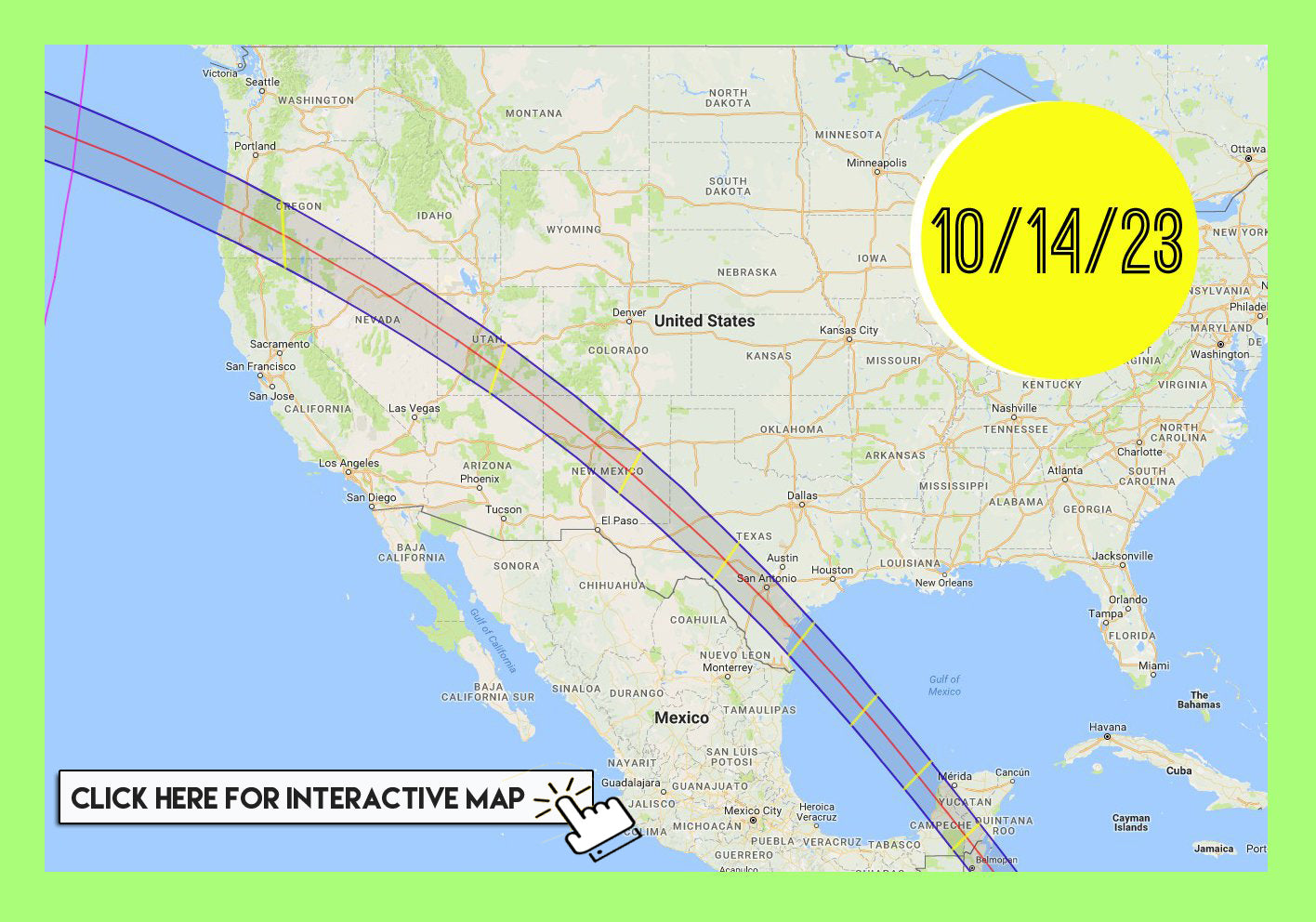2023 Annular Solar Eclipse

A Guide to the 2023 Annular Eclipse
On October 14, 2023, the moon will pass between the Earth and the sun, creating a shadow on many parts of the planet's surface. Unlike a total solar eclipse, this celestial event will only partially cover the sun, creating a ring of fire around the moon at certain locations. This is why it's called an annular eclipse.
The Best Locations to See the 2023 Annular Eclipse
The annular eclipse will be visible from many parts of the planet, but the complete ring of fire will only occur along a relatively narrow path of locations in South, Central and North America. The maximum eclipse will occur in the following U.S. cities:
- Eugene, Oregon
- Winnemucca, Nevada
- Beaver, Utah
- Albuquerque, New Mexico
- San Antonio, Texas
Many other cities in the United States and other countries will experience a partial annular eclipse. As much as 50% coverage can be seen by up to 1,000 miles away from the path of annularity.
How to View the Annular Eclipse Safely
The main tip for staying safe during the eclipse is to never look at it directly with the naked eye. You can, however, use specialized solar viewing glasses to get a direct view of the solar eclipse without damaging your eyes. These tested, approved and certified glasses block harmful rays while allowing you to witness the harmless visual spectrum of light that creates the amazing ring of fire.
October 14th, 2023
Eleven years after an annular solar eclipse crossed the western United States on May 20, 2012, another annular eclipse will race across the USA from Oregon to Texas on Saturday, October 14, 2023. The eclipse begins its trip through the US at Oregon’s Pacific Coast. It then will move southeastward over California, Nevada, Utah, Arizona, Colorado, New Mexico, and Texas. The path of annularity moves through the American Southwest, which will provide lots of opportunities to capture the eclipse above stunning landscapes.
After the eclipse leaves the US at the Texas gulf coast, it proceeds to Mexico, Belize, Guatemala, Honduras, Nicaragua, Costa Rica, Panama, Colombia, and Brazil. This eclipse is a preview for the the total solar eclipse of April 8, 2024 which crosses Mexico, US, and Canada.
Do you need Eclipse Glasses for an annular solar eclipse?
During an annular solar eclipse, the apparent size of the Moon’s disk is slightly smaller than the apparent size of the Sun’s disk. Therefore only the outer edge of the Sun remains visible and the Sun appears as a brilliant ring if you are inside the path of annular solar eclipse. This is an otherworldly sight often called a “ring of fire”, but you must use eclipse glasses, solar filters, or other safe viewing method during all stages of eclipse.
This eclipse will be an appetizer for the spectacle of a total solar eclipse crossing the United States just 177 days later on April 8, 2024. While not as dramatic as a total solar eclipse, an annular solar eclipse promises a spectacular vision featuring the striking sight of the Sun as a ring.

